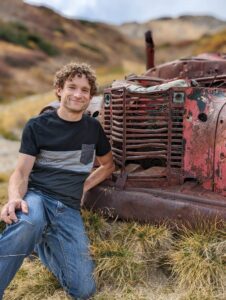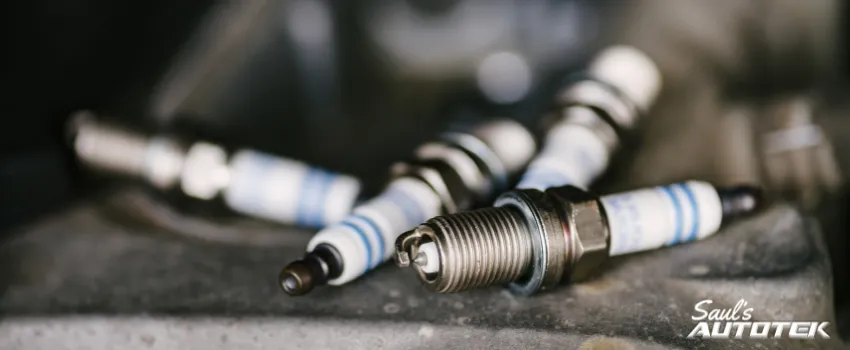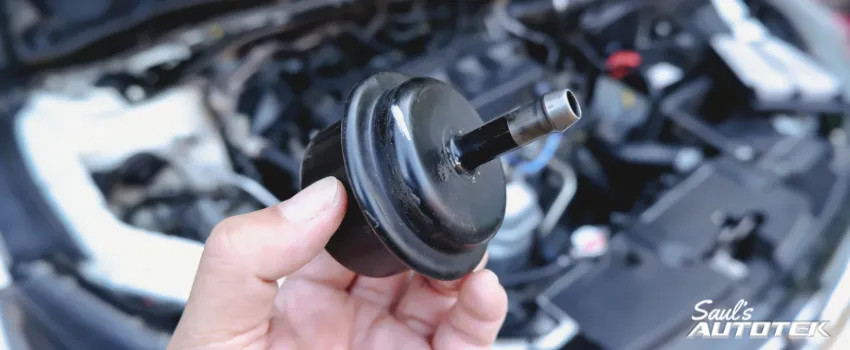The first brake rotor design that we’re going to look at is the original single-plane rotor.
Now the design of this is pretty basic. In this case, it has five bolt holes where it will slide on to the hub of the vehicle. It rotates with the wheel and tire of the vehicle and when you apply the brakes two pads that rest on either side are squeezed by hydraulic caliper to stop the vehicle from moving. The goal of this is the basic physics principle of transferring kinetic moving energy into thermal energy via friction. The way these systems wear out, your brake pads themselves have a thickness of typically five-to-10-millimeters. This brake pad is worn down to about two millimeters.
Its opposing side is almost completely worn down and has very little pad life left. It is almost hitting the actual metal surface of the backing plate. These pads are worn out; time for a replacement. When they sit against the rotor, because they don’t sit perfectly across the entire height of the rotor, they will eat directly into it which is where we see this nice shiny surface. This will leave more material over time on the upper and lower ridges of the rotor. This is why, after several sets of brake pads, your brake rotors will typically need to get replaced. Many shops will often recommend to you that they machine the brake rotor meaning that they will physically cut with a lathe to make this surface smooth as glass again.
Now the goal when they sell you that is that this pad will then have a good friction surface area to make nice, smooth contact with the rotor. The downside of this, however, is very significant and twofold. First and foremost, by reducing the thickness of the brake rotor, the pads themselves, where they attach, must sit further into the rotor itself. This means that the hydraulic caliper that physically squeezes them together has to extend further than its normal range of motion. That means that the caliper can overextend and potentially damage the caliper and it also means that your brake pedal will sit slightly lower to the floor as the system has not been returned to its original position.
Last but not least, but definitely the most significant. When the material is removed from this rotor it loses mass. Brake rotors are designed to be heavy. The goal is for these to hold as much heat as possible. So when you’re coming down the mountains and you hit the brakes and these get nice and hot, the more mass there is here to disperse that heat, the greater the brake rotor is to resisting vibration from warping. One of the most common complaints that we have here in Colorado is vehicles that see lots of mountain service where they will hit the brakes at high speed and feel a vibration or pulsation from the steering wheel. This is non-reversible damage caused by warping the rotors.
We often see this on vehicles after the rotors have been machined and have less material on them. At Saul’s Automotive we only replace rotors because we keep your safety in mind no matter what. We are more than happy to get a look at the pads, calipers, rotors, the hardware, and any associated pieces of the brakes on your vehicle. The brakes are one of the largest safety systems and we take them very seriously here. If you need a free brake inspection at any time, please feel free to stop by.
Call us at 303-919-7769 for a FREE brake inspection in Greenwood Village, Denver or any place in Colorado. Anytime. Any Day.
Schedule Your FREE diagnostic Subaru Outback Auto Repair Upkeep and Repair Appointment
Check out Our Reviews On Yelp! And Leave A Great One For Us!
Join Our Conversation on Facebook
Explore Our Exceptional Denver Auto Repair Services
- Brake Repair Service
- Suspension Repair
- Steering Repair
- Engine Repair
- Automotive Air Conditioning and Heating Repair





